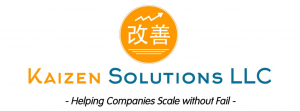I recently facilitated a workshop with several CEOs where we worked on the dramatic business growth model components. One of the questions that I had asked them beforehand was, “What is Your Profit/X?” The results showed that there this concept is not clear to many. So I will try to provide some clarity below.
What is Profit/X?
Jim Collins, in Good to Great, said,
“The essential strategic difference between the good-to-great and comparison companies lay in two fundamental distinctions. First, the good-to-great companies founded their strategies on a deep understanding along three key dimensions; what we came to call the three circles. Second, the good-to-great companies translated that understanding into a simple, crystalline concept that guided all their efforts … one particularly provocative form of economic insight that every good-to-great company attained is the notion of a single ‘economic denominator.'”
The economic denominator is Collins refers to is “X.” So if you could pick just one “profit per X” ratio to increase over time systematically, what “X” would have the most significant and sustainable impact on your business?
Whatever it is, it is your single, overarching KPI, and to achieve that status, it needs to meet the following:
- Everyone in the business knows it.
- It is the factor by which all significant, strategic decisions are measured.
- It has a positive impact on revenue and is cost-effective
- More “X” is desirable.
- It is tightly aligned with your long-term vision.
- It is unique within your industry.
- It should improve your team’s discipline and focus.
- It should decrease the likelihood of spending on initiatives that end in failure or don’t align with your strategy.
- It can always tell you whether you are trending forward or backward?
- Everyone understands their role in driving its improvement.
How do you determine it?
Again from Good to Great, “The denominator can be quite subtle, sometimes even unobvious. The key is to use the question of the denominator to gain understanding and insight into your economic model.”
So, determining your “profit per X” is not just choosing what appears to be the most obvious answer, as many do. Instead, you need to understand your company’s economic model. Don’t just accept any denominator, but figure out what is the strategy to increase it.’
However, determining your “profit per X” is difficult! It requires an investment of time and effort and will be the source of many debates and disagreements. Not only that, but once you do agree on your unique KPI, it needs to be managed, which is also tricky. Finally, it requires the discipline to review and monitor it continually; otherwise, it won’t provide helpful insight.
Determining your unique economic denominator is difficult. Because it’s complicated, many companies are unwilling to invest the time and effort required for this exercise to succeed.
Remember, what works for one company may not work for yours!
Those who struggle to determine it?
Some of the CEOs I asked struggled to develop their “profit per X.” What is apparent is that those companies are not clear on their core customer and marketplace, so they cannot clearly articulate what problem they’re solving and for whom.
A CEO didn’t have the data on their profitability per client, so without that, they couldn’t determine effectively who their core customer is. However, he informed us that the larger customers were the most profitable. Suppose the data shows that is the case. In that case, they are probably over-servicing their smaller clients and making barely any money from them. If the company lost all these smaller clients, they would be only marginally worse off. It would be better for them to focus most of their resources on our higher value, larger customers, which will lead to exponential growth.
It needs to align with your strategy.
It is critical that “profit per X” is tightly aligned with your long-term vision. Many companies either pull a random number out of thin air or align it to a vague aspiration statement. That will not work! Your strategy and “profit per X” must support each other, and your strategic goals should be measured in the same units as “X.”
Some of the CEOs I mentioned said “gross profit per FTE” and another revenue per FTE with a general assumption on profit levels. The latter fails the test above because no one in the company knows it, gets behind it, and it’s not measured regularly. Gross profit per FTE reflects efficiency, but does it align with the strategy and drive growth? If the strategy is to be the most efficient in the industry, maybe. But if your strategy is to grow to $XMM in revenue and be the market leader, probably not. Using up valuable management cycles and energy to improve efficiency will distract from your growth objective. Instead, find a “profit per X” that drives revenue growth.
Unique within your industry.
When discussing this concept recently, someone mentioned that they didn’t believe it needed to be unique to your business. However, suppose the key driver in your economic engine is the same as your competitions’. In that case, you are all focused on pursuing the same outcomes from the same market. The result is that you are viewed as a commodity rather than differentiated from your competition. Once you’re a commodity, it is a race to the bottom.
Also, a good “profit per X” can provide an advantage to your business even during an economic downturn by differentiating the company from the competition and focusing on revenue and costs containment. It can help a business succeed, even if it’s in a dying sector.
Here are some examples of how uniqueness can enable your business to scale dramatically.
Walgreens. In Good to Great, Collins uses Walgreens chemists as an example. The industry model was profit per store, so to increase “profit per store,” the trend was fewer larger stores. Instead, Walgreen adopted the Starbucks model of profit per customer visit. As a result, they focused on opening lots of smaller stores instead of a few big ones. With more (conveniently located) stores, customers’ likelihood of coming to one of their stores increased. Since the customers were no longer visiting for a single purpose, customers’ spend per visit increased.
Southwest Airlines. The world’s most profitable airline. Southwest identified that their core customer was someone who would otherwise get the bus or drive. They weren’t solving the problem of a Fortune 1000 executive who needs to fly from the US to Europe on a flatbed. With customer clarity, their “Profit per X” was profit per airplane. They made their money while their planes were in the air. They identified their competitors, not as other airlines, but bus companies. So, their business was focused on price. They stripped out food and assigned seats to increase profit per airplane and only used one model – the 737.
Autopia car wash. Like many companies, it was focused on “profit per customer.” While they offered car wash memberships, the “profit per customer” metric showed membership customers were less profitable. They took up more admin time to update credit card details than single-transaction customers.
However, looking at the data and examining the company’s economic engine, the CEO realized membership customers were ten times more valuable, not the inconvenience he perceived. The company pivoted its model to focus on memberships, making customer satisfaction and member benefits central to the strategy. Profit per membership card became the new “profit per X,” the one metric that drove the company’s growth. (Thanks to Doug Wicks, a Scaling Up coach, for sharing this story).
New System Laundry. New System Laundry serviced the hospitality industry, picking up and delivering laundry. Again their “profit per X” was profit per customer. However, given their core customer, they could only scale the business by increasing business per customer or prices. They re-examined their business and economic model. Changing their “profit per “X” to “Gross profit per truckload” enabled them to focus on reducing cost per delivery through more efficient delivery routes and schedules, customer clustering, and core customer locations. They added new customer locations strategically, and the business grew dramatically!
A jewelry design firm. Their initial “profit per X,” like many, was profit per customer. However, looking at the data, it was apparent that many showroom customers were not profitable as they took up too much time and didn’t spend enough. As a result, the owner closed the showroom and moved into a studio, taking customers by appointment only. Taking appointments on weekends and offering champagne and hors d’oeuvres while customers shopped, revenue per appointment increased over 400%. As a result, “profit per X” is now “profit per appointment.” By optimizing appointments, the business can scale dramatically. (Thanks to Glen Dall, a fellow Gravitas coach, for sharing this story.)
So what is your “profit per X?”
As I have tried to show above, profit per X is different for everyone. It needs to align with your strategy and drive dramatic growth. What works for one company doesn’t necessarily work for you.
Below are some examples to get you and your team’s imagination going about what is the unique economic denominator for your company:
- Profit/customer visit or interaction
- Profit/customer
- Profit/employee
- Profit/location
- Profit/geographic region
- Profit/part manufactured
- Profit/division
- Profit/sale
- Profit/purchase
- Profit/life of the customer
- Profit/plant
- Profit/brand
- Profit/local population
- Profit/invoice
- Profit/market segment
- Profit/store
- Profit/square foot
- Profit/fixed cost
- Profit/recurring revenue client
- Profit/seat
- Profit/plane
- Profit/product line
If you would like help determining your “profit per X” and dramatically scaling your business, contact me.
(c) Copyright 2021, Marc Borrelli

















